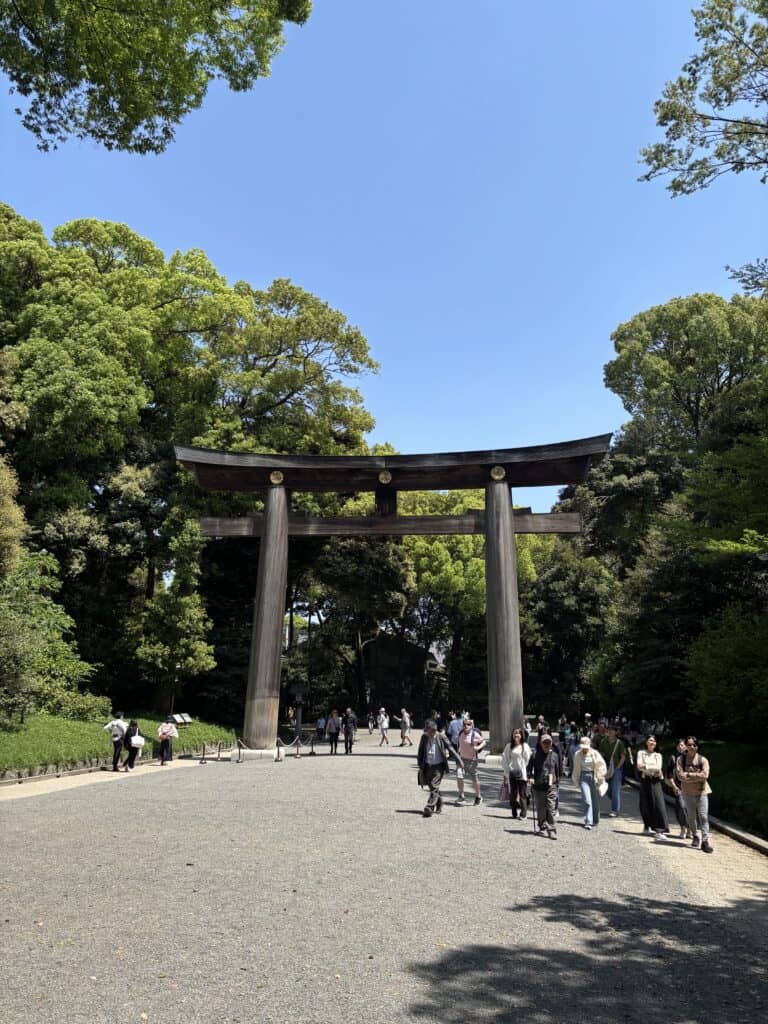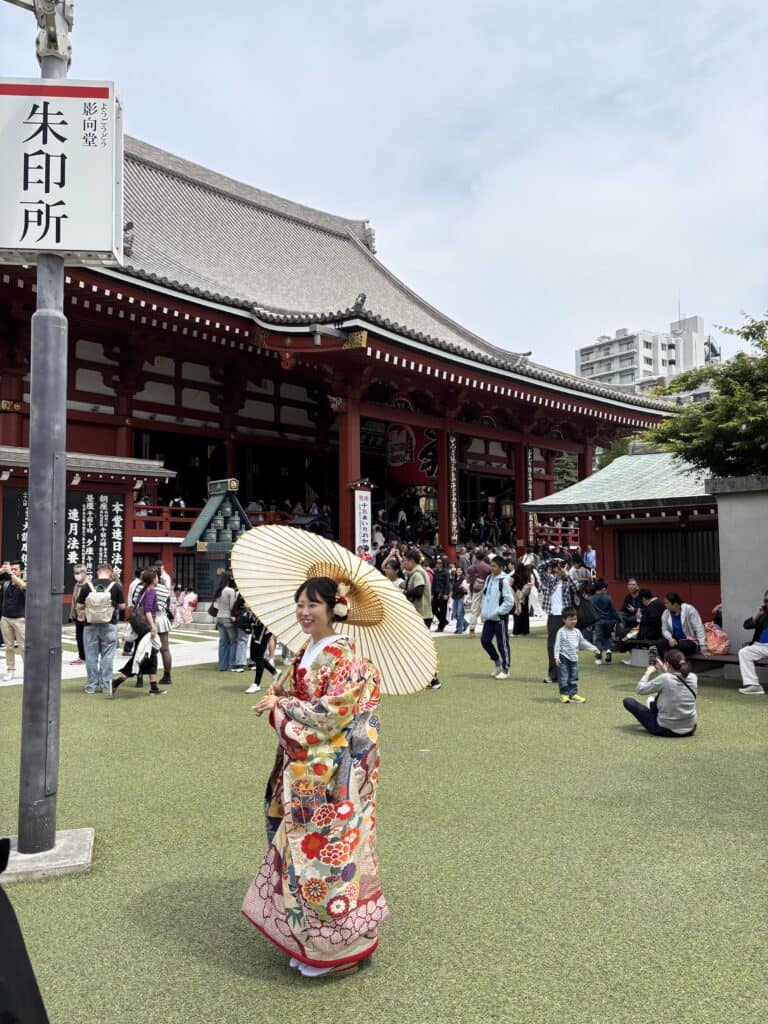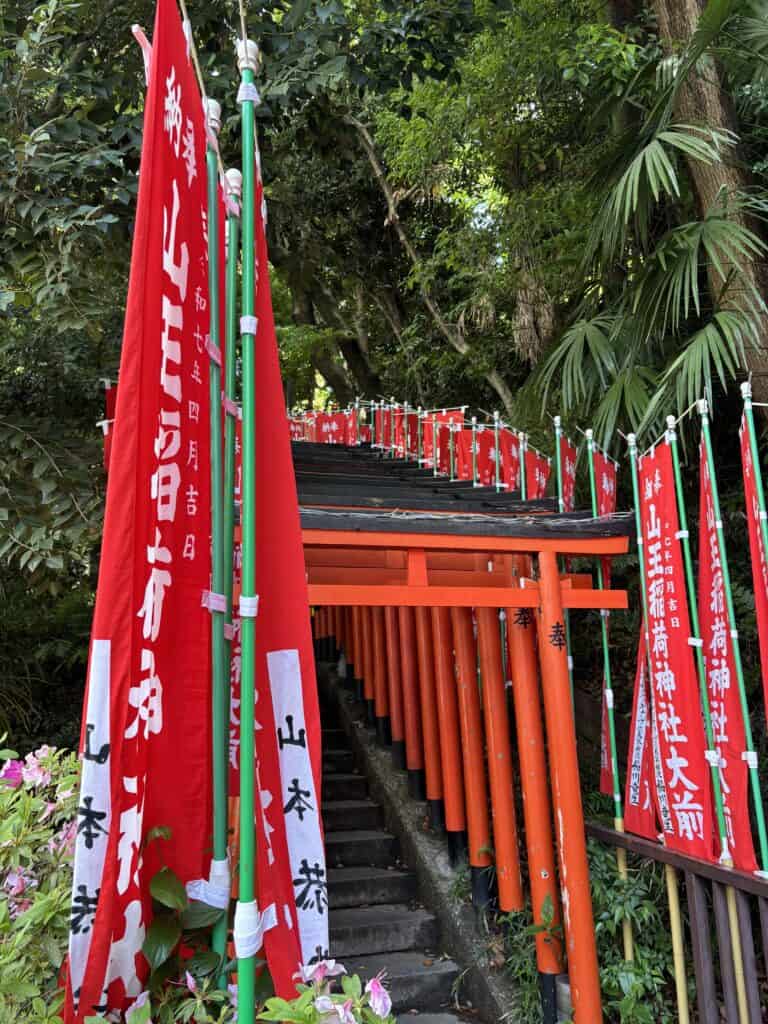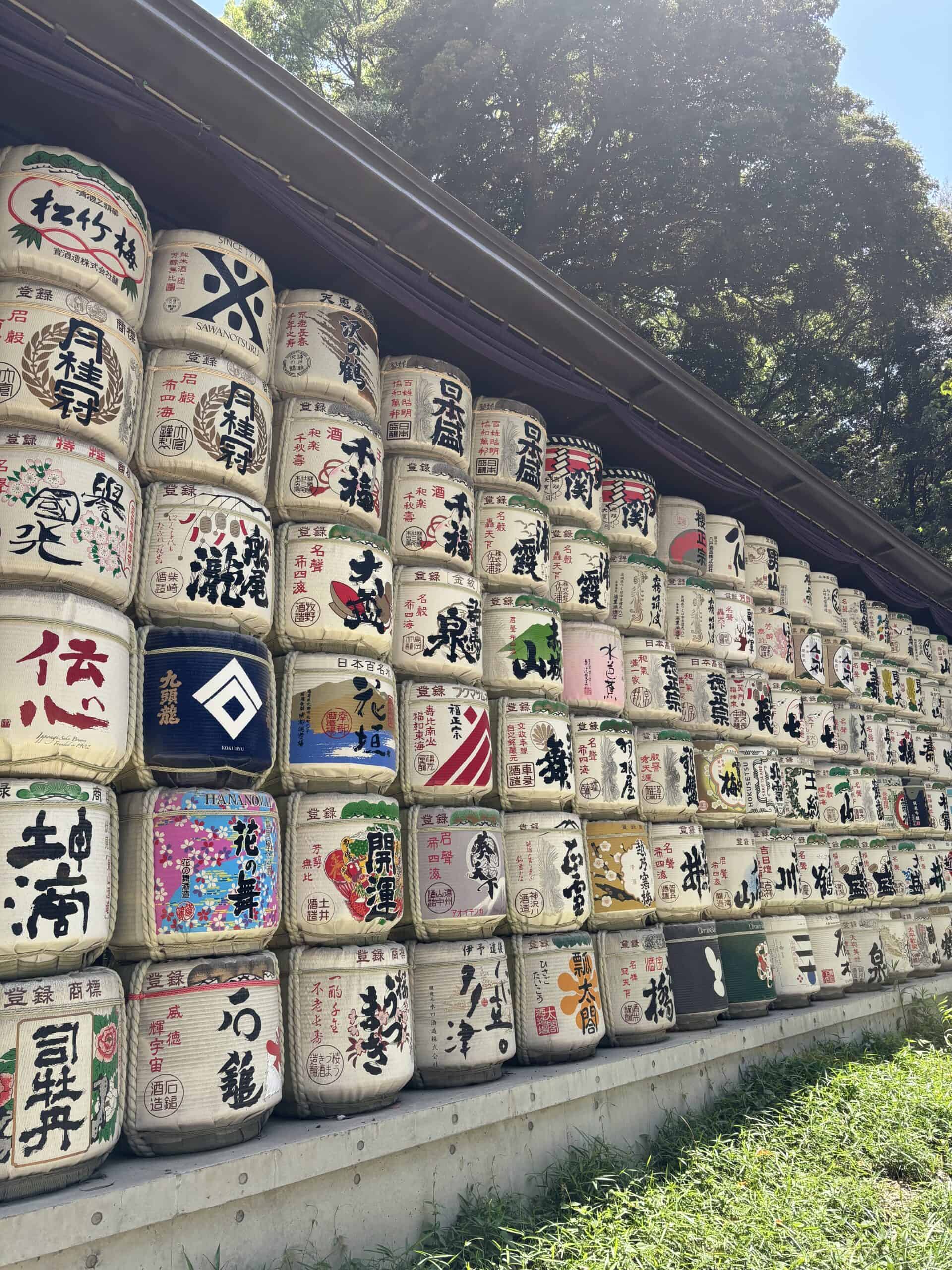What to prepare for? Honestly, you can’t really prepare 🙂
All you need is your phone and passport – especially for Tax Free shopping (you get the tax deducted instantly for purchases over 5000 yen where applicable). Then just Google Maps, a translator app, a local eSIM – and that’s basically it.
Instagram or AI will suggest all the interesting places for you.
You can buy an eSIM via Revolut or Airalo. Both apps work well and reliably (more info here). It’s good to have some cash on hand, and Revolut gives you good exchange rates. Japan is still a cash-first country – especially for metro tickets – but! You can add a SUICA card to your Apple Wallet (on iOS, it’s just a few taps). You can top it up using your card and use it across Japan for public transport (works on trains, metro, buses – just tap in and out, and it deducts automatically).
Google Maps in Japan is incredibly detailed – including metro exits marked by numbers. You just type in your destination and it tells you which train to take, where to change, and even which exit number to use (especially accurate in Tokyo – Kyoto isn’t quite as detailed, but still very helpful).
The airport transfer: There’s an express train that takes you close to a metro station or to the main train station where you transfer. The metro network is dense and stations are clearly numbered – line + number – so you don’t even need to remember station names, just follow the numbers on the map.
What to See in Tokyo
Shibuya Crossing – the most famous pedestrian crossing in the world, where up to 3000 people can cross at once. There are several places around where you can watch it from above – the most well-known is Starbucks right above the intersection. If you love Japanese cosmetics, don’t miss Mega Don Quijote in the alleys behind the crossing. You’ll get sucked in for hours!
Just next to it is Meiji Jingu (a Shinto shrine in a park, very peaceful place).
One of the fascinating aspects of Japan are the Torii gates and the ritual connected to them:
Torii (鳥居) is a traditional Japanese gate marking the entrance to a Shinto shrine. It’s one of Japan’s most iconic symbols with deep spiritual meaning.
Meaning of torii:
- Marks the entrance to a sacred space.
- Separates the “profane” (ordinary world) from the “sacred” (realm of the kami = deities).
- Passing through a torii means entering the spiritual world.
Where to find torii:
- Fushimi Inari Taisha (Kyoto) – famous thousands of orange torii forming tunnels.
- Itsukushima (Miyajima) – floating torii in the sea, one of Japan’s most iconic images.
- Meiji Jingu (Tokyo) – huge wooden torii in a forested park in central Tokyo.
- Kumano Kodo – ancient pilgrimage routes lined with torii.
Rituals when passing through a torii:
- Bow slightly before entering the gate.
- Don’t walk through the center – it’s the path of the gods. Walk slightly to the left or right.
- After passing, proceed to the purification fountain (temizuya) and then to the shrine.

Shinjuku
Skyscrapers, neon jungle, nightlife, Golden Gai (tiny local bars). Food, food, food everywhere. It’s close to Shibuya, so you can combine both. There’s even a giant 3D digital billboard – the 3D Cat.
Asakusa and Senso-ji Temple
The oldest Buddhist temple in Tokyo, surrounded by traditional market stalls in Nakamise Street. You can easily spend hours here exploring the charming alleyways and tasting street food.

Hie Shrine and Imperial Palace
Hie Shrine – a Shinto shrine known for its red torii gates, dedicated to the guardian deity of the city and the Tokugawa clan. Nearby, walk past Nijubashi Bridge and the gardens of the Imperial Palace.

Ginza
High-end shopping, classic department stores, and depachika food halls. You’ll find everything here – including a massive Uniqlo store.
City Views
- Tokyo Skytree – tallest tower in Japan (634 m), with observatory, aquarium, and shopping mall.
- Tokyo Tower – the red and white “Eiffel Tower”, great night views.
- Metropolitan Government Building (Shinjuku) – free panoramic observatory.
Off the Beaten Path
- Shimokitazawa – hipster district with vintage stores, cafes, and tiny bars.
- Yanaka – old Tokyo without skyscrapers, traditional wooden homes, calm atmosphere.
- Tsukiji Outer Market – street food, sushi, seafood (the inner market moved, but the area is still lively).
- Kagurazaka – historic lane with a French flair, hidden shrines, and cozy restaurants.
Experiences & Activities
- teamLab Planets – immersive digital art (reservation needed).
- Sushi workshop or tea ceremony – hands-on cultural experience.
- Sumo training & chanko nabe breakfast – visit a sumo stable in the morning.
- Theme cafés – cat, owl, manga, or even capybara cafés!
Here’s a link to my custom map with pinned spots – food, sights and more:
My Japan Travel Map
What to Eat in Japan
Japanese cuisine is more than just sushi – it’s a refined world of flavors, textures, and traditions. Whether you’re in Tokyo, Kyoto, or Osaka, you’re in for a culinary adventure. Here’s what not to miss:
Classics You Must Try
Start with the iconic ramen, a hearty noodle soup with broth, meat, and egg – available in many regional varieties. Seafood lovers will appreciate fresh sushi or sashimi, best enjoyed at a sushi bar or department store food halls (depachika).
Street Food & Snacks
Try takoyaki (crispy octopus balls) or okonomiyaki (savory cabbage pancakes), especially in Osaka or Hiroshima. Other musts: yakitori (grilled chicken skewers), korokke (croquettes), and onigiri (rice balls) from convenience stores.
Sweets & Tea Culture
Sweet tooth? Don’t miss mochi (chewy rice cakes with red bean paste) or matcha desserts like ice cream and cakes, especially in Kyoto.
From Tokyo to Kyoto by Shinkansen
Take the bullet train to Kyoto – trains leave frequently, so you’ll easily find a connection. One-way ticket costs around €100. Everything is well marked at stations, and if you sit on the right side, you’ll get a great view of Mount Fuji along the way.
What to See in Nikkō
1. Tōshō-gū Shrine (UNESCO)
- Incredibly ornate shrine dedicated to Tokugawa Ieyasu.
- Home to the famous “see no evil, hear no evil, speak no evil” monkeys.
- Look for the Sleeping Cat carving and the golden Yōmei-mon gate.
2. Futarasan Shrine
- Older and simpler, with a peaceful atmosphere and forested surroundings.
3. Rinnō-ji
- Buddhist temple with three golden statues representing the sacred mountains of Nikkō.
4. Shinkyo Bridge
- Bright red sacred bridge over the Daiya River – perfect photo spot.
Nature and Side Trips Around Nikkō
5. Nikkō National Park
- Mountains, waterfalls, lakes, and hot springs – ideal mix of culture and nature.
6. Lake Chūzenji
- Serene volcanic lake – especially beautiful in autumn.
7. Kegon Falls
- One of Japan’s tallest waterfalls (97 m) – you can take an elevator down for a better view.
8. Irohazaka Winding Road
- 48 curves up the mountain – scenic, especially in October and November.
How to Get to Nikkō
- From Asakusa: Take Tobu Limited Express SPACIA or Revaty directly to Tobu-Nikkō (≈2h).
- From Tokyo Station or Ueno: Take Shinkansen to Utsunomiya, then transfer to JR Nikkō Line (≈2h total).
- Use Japan Rail Pass? Prefer the Utsunomiya route.
Sample Itinerary (April–May)
Tokyo (April 26–29)
- Day 1: Arrival, relax, evening in Shibuya or Shinjuku.
- Day 2: Asakusa, Senso-ji, Tokyo Skytree, Akihabara.
- Day 3: Harajuku, Meiji Shrine, Omotesando, Shibuya Crossing.
- Day 4: Full-day trip to Mount Fuji (Kawaguchi Lake, Chureito Pagoda).
Osaka + EXPO (April 30–May 6)
- Day 5: Travel Tokyo → Osaka, visit Dotonbori & Namba.
- Day 6–8: 3 days at EXPO Osaka.
- Day 9: Day trip to Kyoto – Kinkaku-ji, Arashiyama, Gion.
- Day 10: Day trip to Kyoto – Fushimi Inari, Kiyomizu-dera, Nijo Castle.
- Day 11: Morning in Nara (Todaiji, deer park), return to Osaka.
Hiroshima + Miyajima (May 7–9)
- Day 12: Travel to Hiroshima, visit Peace Memorial and Atomic Dome.
- Day 13: Day trip to Miyajima (Itsukushima Shrine, floating torii).
- Day 14: Morning visit to Hiroshima Castle, Shukkeien Garden, okonomiyaki tasting.
Tokyo Return (May 10–14)
- Day 15: Return to Tokyo, afternoon free.
- Day 16: Ginza, Imperial Palace, Roppongi.
- Day 17: Optional day trip to Kamakura or Nikko.
- Day 18: Tokyo museums, shopping, or Odaiba (futuristic island).
- Day 19: Departure.

